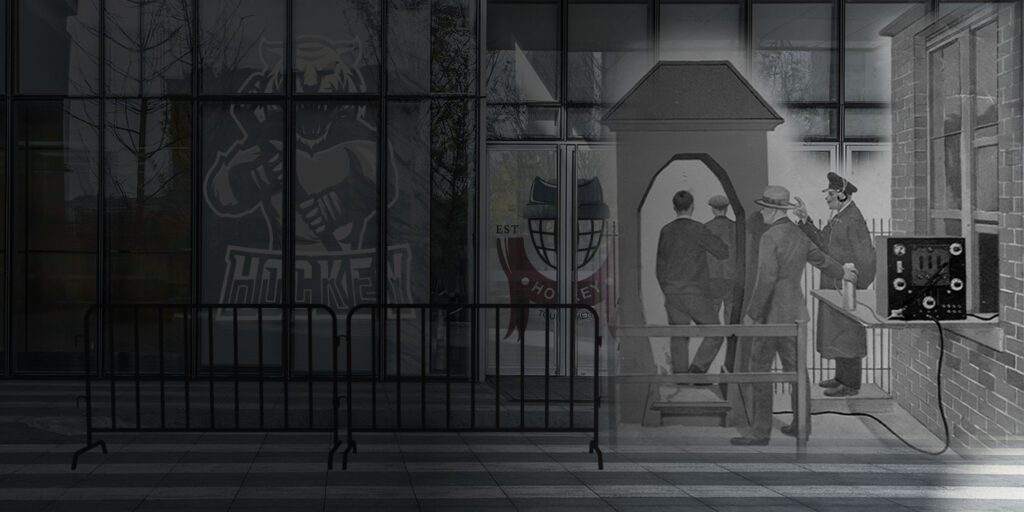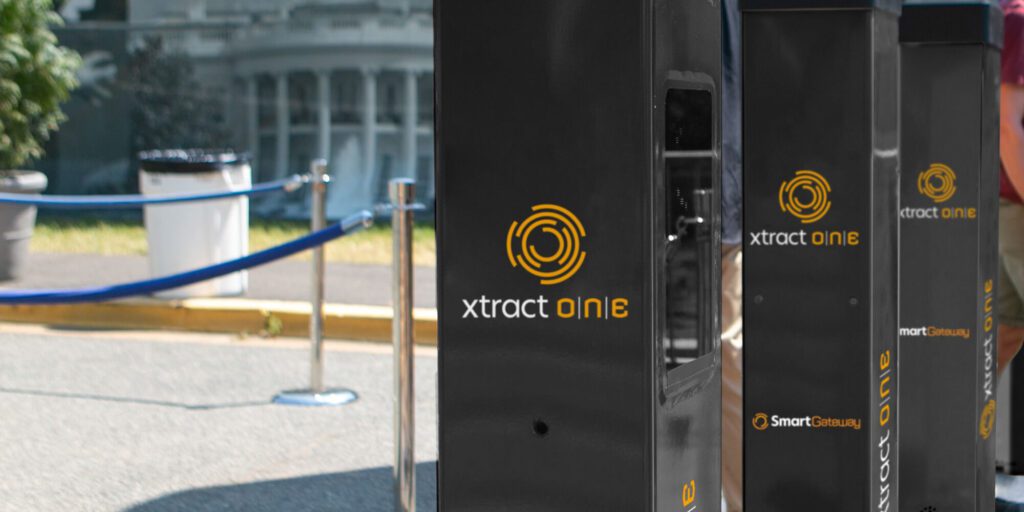For decades, walkthrough metal detectors served as the standard for security screening in public spaces. However, today’s security challenges demand more sophisticated solutions that can adapt to modern environments while maintaining efficient operations. Traditional walk-through devices are becoming increasingly outdated and can even be considered obsolete technology.
Let’s explore some of the reasons why:
Limited Weapons Detection Capabilities
Walk-through metal detectors (that utilize only metal detection) are designed primarily to detect metal objects such as guns and knives. However, their inability to distinguish between threats and everyday items – like laptops, metal water bottles, phones, etc. – creates significant operational challenges. These limitations compromise overall security, making them increasingly inadequate for modern environments where people routinely carry multiple electronic devices.
Advanced screening technologies now offer more comprehensive detection capabilities through sophisticated AI and multi-sensor systems. These solutions can accurately identify potential threats while allowing harmless items through without alerting, giving both security personnel and the public peace of mind.

Slow and Inefficient Screening
Walk-through metal detectors can be slow and cumbersome. Processing only 500-600 people per hour while walking one at a time creates substantial bottlenecks in high-traffic areas like stadiums and schools. When each person must empty pockets and remove devices, lines grow longer and frustration builds. This inefficiency affects venues, educational institutions, and corporate environments where smooth entry flow is expected.
Modern AI-powered systems can process thousands of individuals hourly while maintaining effective, high security coverage. This increased efficiency transforms the entry experience from a source of delay and frustration into a smooth, natural process.
High False-Positive Rates
Walk-through metal detectors burden security operations through constant false alerts. Every phone, set of keys, or metal water bottle triggers an alert, forcing security staff to conduct time-consuming secondary screenings. These unnecessary checks not only drain staff resources but create a “cry wolf” effect that can dull responses to genuine threats.
Modern detection technology eliminates this challenge through sophisticated AI that accurately identifies potential threats while allowing common items to pass through unimpeded. Security staff can focus their attention on actual concerns rather than investigating routine personal belongings. This advancement shifts entry screening from a series of frustrating interruptions into a smooth, efficient process.
Security Gaps and System Vulnerabilities
Security flaws plague outdated metal detection technology. Software vulnerabilities, inconsistent calibration, and basic circumvention methods create concerning gaps in protection. For high-risk environments like schools, government buildings, and public venues, these weaknesses pose unacceptable risks.
Advanced weapons screening systems eliminate these vulnerabilities through sophisticated detection methods and regular security updates that adapt to emerging threats. Multiple layers of protection maintain effectiveness while preventing system compromise, ensuring facilities receive consistent security coverage.
Staffing and Resource Requirements
Traditional screening methods create substantial operational strain through their staffing needs. Multiple personnel must manage secondary screening stations and bag checks, driving up costs while pulling resources from other essential security duties. Complex scheduling requirements compound the challenge of maintaining adequate coverage.
Modern solutions optimize staff deployment through:
- Efficient alert management systems
- Reduced secondary screening requirements
- Streamlined primary screening operations
- Intuitive interfaces that minimize training needs

Environmental Challenges
Electromagnetic interference from nearby equipment disrupts traditional screening accuracy. Elevators, turnstiles, and even building materials create detection shadows and false alarms. At outdoor events, rain and temperature fluctuations further compromise reliability. These issues force security teams to constantly adjust sensitivity settings, often choosing between excessive alerts or potential security gaps.
Add to this the rising use of smart building technology – from automated doors to digital signage systems. Each new installation introduces potential interference sources that can affect screening reliability. Modern facilities require detection systems that can navigate this increasingly complex electromagnetic landscape while maintaining consistent performance.
Integration with modern building systems requires sophisticated shielding and adaptive technology that maintains consistent performance across all conditions. This reliability proves especially crucial for multi-entrance facilities managing various environmental factors simultaneously.
Walkthrough Metal Detectors’ Impact on Modern Security Operations
Today’s security challenges extend far beyond simple metal detection. Different environments present unique operational requirements:
Educational Institutions
In school environments students carry laptops, tablets, and other electronic devices essential for learning. Many institutions have resorted to banning common items like three-ring binders because traditional detectors can’t distinguish between threats and educational materials.
Corporate Environments
Professional settings need to maintain security while preserving operational efficiency. Traditional methods that separate employees from their devices create delays impacting productivity and workplace atmosphere.
Healthcare Facilities
Hospitals must create welcoming environments while protecting their vulnerable patients, staff and visitors. Cumbersome walkthrough security methods can create anxiety and delays that work against the core mission of patient care.
Entertainment Venues
Facilities processing thousands of guests need efficient, thorough screening that maintains positive visitor experiences. Long lines and frustrated guests impact both security and business operations.
Modern Security Requirements
Today’s facilities need solutions that can:
- Process high volumes efficiently without compromising detection
- Distinguish between everyday items and actual threats
- Maintain natural operational flow
- Optimize staff resource allocation
- Adapt to varying security needs throughout the day
- Integrate with existing operations
While traditional walk-through metal detectors played an important role in security’s history, today’s environments demand more sophisticated solutions. Advanced screening systems powered by artificial intelligence and precise detection technology offer superior capabilities while maintaining operational efficiency. As security needs continue to change, facilities will increasingly turn to solutions that enhance protection while preserving the user experience.
